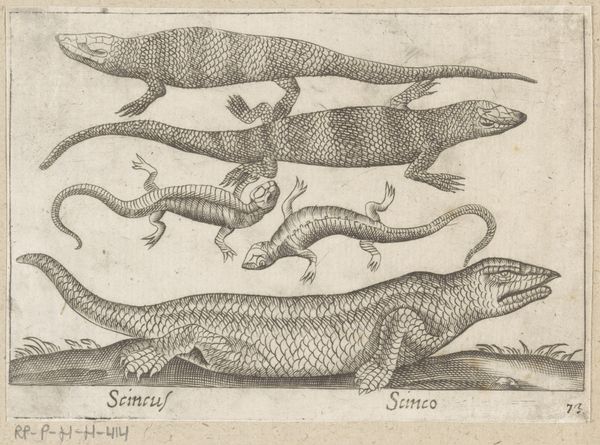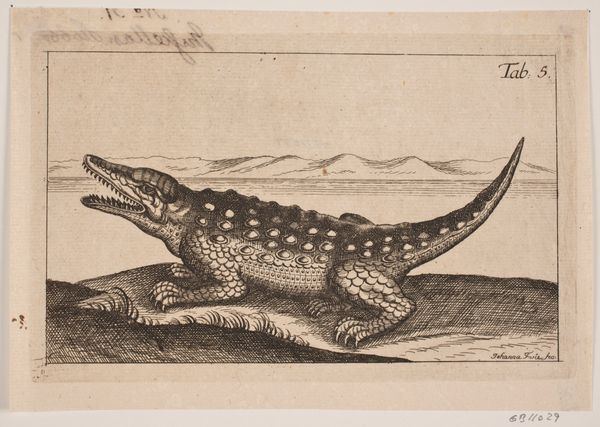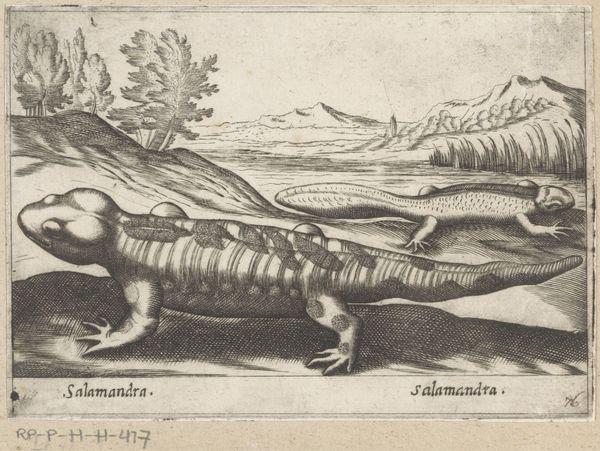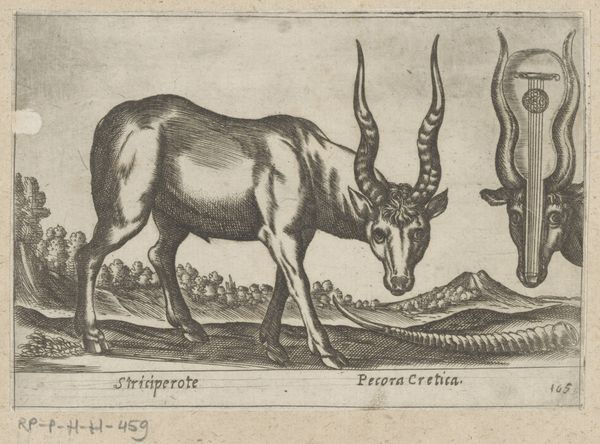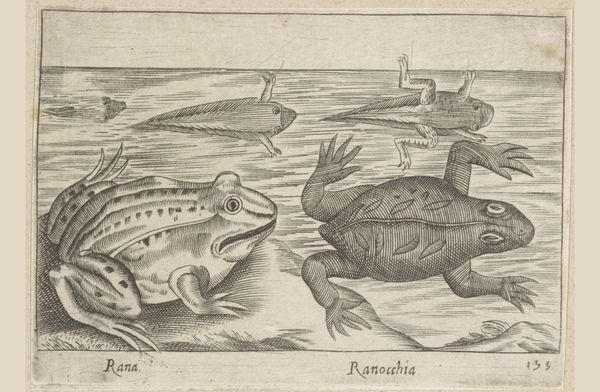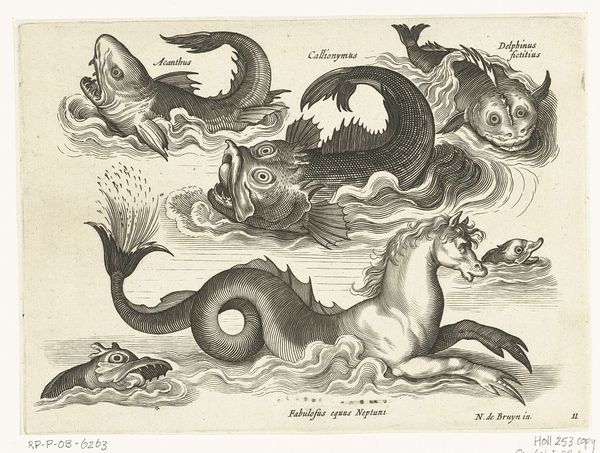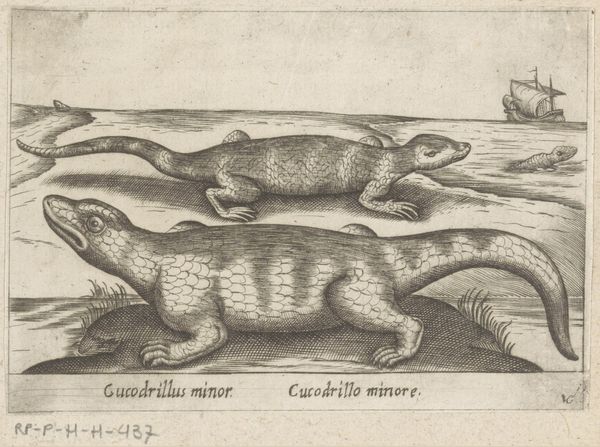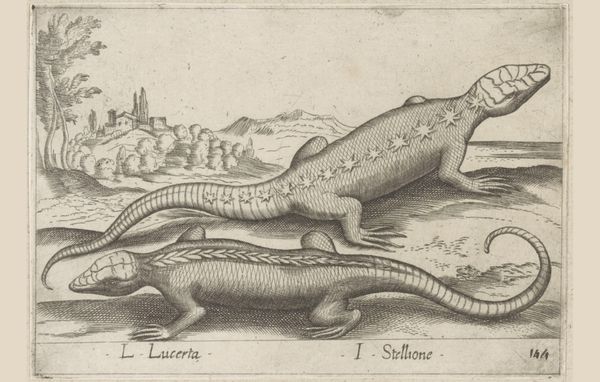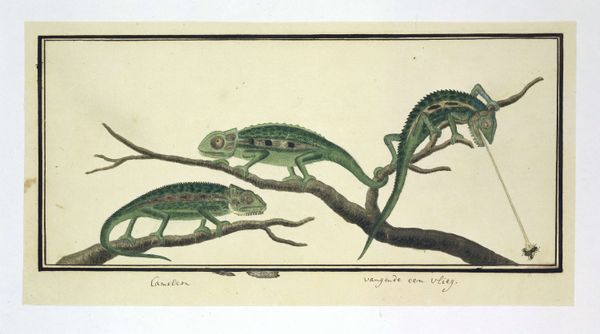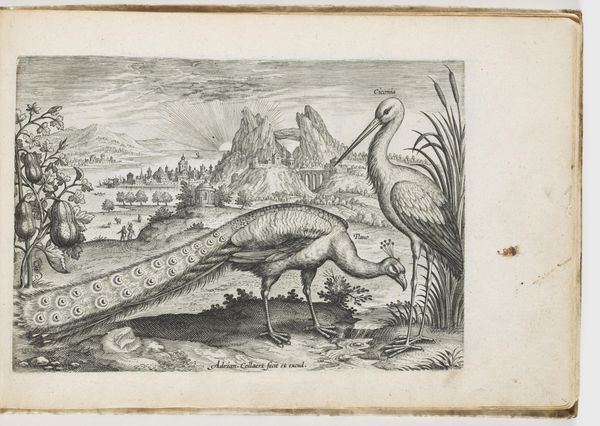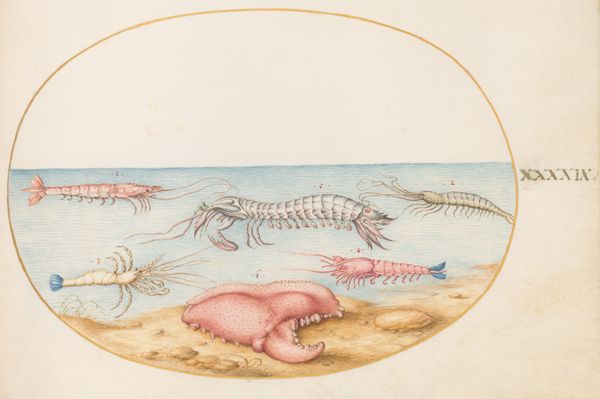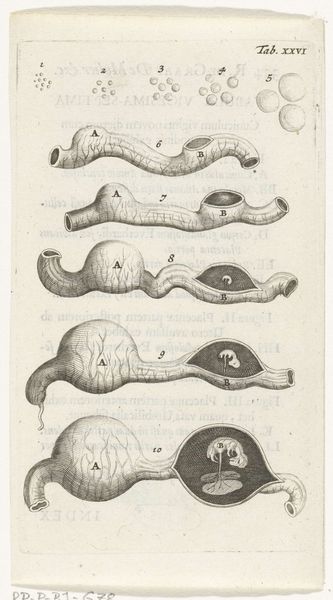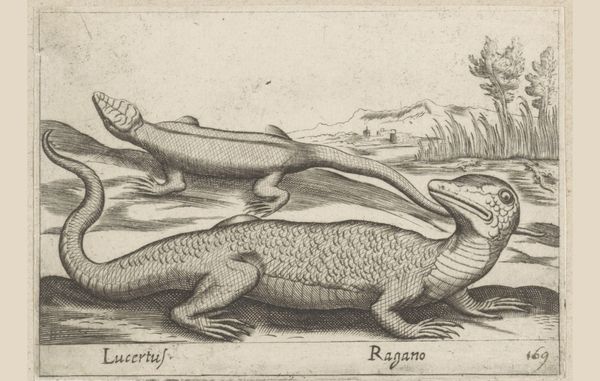
drawing, print, engraving
#
drawing
#
imaginative character sketch
#
toned paper
#
light pencil work
#
quirky sketch
#
animal
# print
#
pencil sketch
#
sketch book
#
form
#
11_renaissance
#
personal sketchbook
#
sketchbook drawing
#
storyboard and sketchbook work
#
sketchbook art
#
engraving
Dimensions: height 95 mm, width 137 mm
Copyright: Rijks Museum: Open Domain
Curator: Here we have Antonio Tempesta's "Three Lizards," or "Drie Hagedissen," from before 1650, housed here at the Rijksmuseum. It's an engraving. What's your immediate take? Editor: It’s peculiar, in a captivating way. There's an odd formalism—the lizards are stacked almost like specimens, yet it still conveys movement. Are they scientific illustrations, perhaps? Curator: That's an excellent question. Tempesta's known for his battle scenes, landscapes, and animal studies. His prints, widely circulated, catered to a growing interest in the natural world but also functioned as decorative elements and sources of visual inspiration for other artists. So, function precedes absolute accuracy. Editor: Right, so this wasn't necessarily about objective documentation but about creating appealing images. Still, these reptiles are presented without any real habitat – a blank slate if you will, which turns them into objects to observe, classify. A demonstration of control, perhaps? Curator: Interesting perspective. The act of depiction itself is always tied to power dynamics. Remember, early scientific illustration played a key role in shaping European understanding—and exploitation—of the natural world and new territories. Editor: Absolutely. And the very deliberate rendering—the careful cross-hatching, the subtle tonal variations on what I assume is toned paper—highlights the artificiality of it all. Look at those claws. And consider this against the backdrop of colonization, these kinds of images played into narratives of dominance. Curator: Indeed, they were visual tools used to categorize, claim, and ultimately control. And the presence of Latin names “Lucerthila, Lucerta” reinforce a desire to classify and taxonomize. Editor: These creatures are almost theatrical in their arrangement. They occupy a liminal space, somewhere between nature and artifice. Curator: A tension inherent in the age. Now when we look at art and media, this piece reminds us that it carries historical weight and consequence. Editor: Exactly, by putting them into a contemporary framework, we may question the intent. Curator: I am now forever changed! Editor: Yes! A powerful experience, for both of us.
Comments
No comments
Be the first to comment and join the conversation on the ultimate creative platform.
